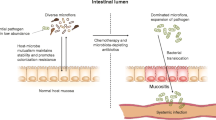Abstract
Adult cancer patients were prospectively studied to determine the relationship between ultrastructural and microbiologic catheter colonization and clinical catheter-related infections. Participants included 38 patients whose central venous catheters were removed because of suspected catheter infection (16 patients) or other noninfectious causes (22 controls). The presence of clinical infection was determined. Catheters were examined by microbiologic methods (sonication and roll-plate culture) and by scanning and transmission electron microscopy. Ultrastructural microbial colonization and biofilm formation were universal and occurred as early as one day after catheter insertion. The extent of biofilm formation was unrelated to the clinical status of patient or the catheter microbiological findings. Secondary seeding of catheters was rarely seen. Catheter microbial biofilm formation occurs early, is universal and does not necessarily represent an infectious condition.
Similar content being viewed by others
References
Bottino J, McCredie KB, Groschel DHM, Lawson M: Long-term intravenous therapy with peripherally inserted silicone elastomer central venous catheters in patients with malignant diseases. Cancer 1979, 43: 1937–1943.
Hamptom AA, Sheretz RJ: Vascular-access infections in hospitalized patients. Surgical Clinics of North America 1988, 68: 57–71.
Collignon PJ, Munro R: Laboratory diagnosis of intravascular catheter associated sepsis. European Journal of Clinical Microbiology and Infectious Diseases 1989, 8: 807–814.
Decker MD, Edwards KM: Central venous catheter infections. Pediatric Clinics of North America 1988, 35: 579–612.
Costerton JW, Cheng KJ, Geesey GG, Ladd TI, Nickol JC, Dasgupta M, Marrie TJ: Bacterial biofilms in nature and disease. Annual Review of Microbiology 1987, 41: 435–464.
Dickinson G, Birno A: Infections associated with indwelling devices: concepts of pathogenesis: infections associated with intravascular devices. Antimicrobial Agents and Chemotherapy 1989, 33: 597–601.
Maki DG, Weise CE, Sarafin HW: A semiquantitative culture method for identifying intravenous-catheter-related infection. New England Journal of Medicine 1977, 296: 1305–1309.
Marrie TJ, Costerton JW: A scanning and transmission electron microscopic study of the surfaces of the intrauterine contraceptive devices. Journal of Obstetrics and Gynecology 1983, 146: 384–394.
Vas SL, Low DE, Oreopoulos DG: Peritonitis in peritoneal dialysis. In: Nolph KD, Martinus N (ed): Peritoneal dialysis. The Hague 1981, p. 334.
Tenney JH, Moody MR, Newman KA, Schimpff SC, Wade JC, Costerton JW, Reed WP: Adherent microorganisms on lumenal surfaces of long-term intravenous catheters. Archives of Internal Medicine 1986, 146: 1949–1954.
Author information
Authors and Affiliations
Rights and permissions
About this article
Cite this article
Anaissie, E., Samonis, G., Kontoyiannis, D. et al. Role of catheter colonization and infrequent hematogenous seeding in catheter-related infections. Eur. J. Clin. Microbiol. Infect. Dis. 14, 134–137 (1995). https://doi.org/10.1007/BF02111873
Issue Date:
DOI: https://doi.org/10.1007/BF02111873




